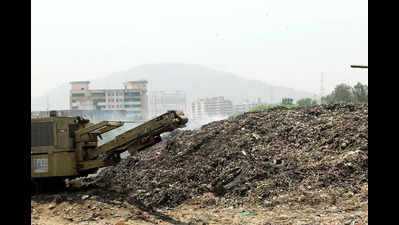- News
- City News
- mumbai News
- Dharavi rehab on ‘habitable' Deonar dump not anytime soon: Experts
Trending
Dharavi rehab on ‘habitable' Deonar dump not anytime soon: Experts

It will take at least three years to scientifically partially close Deonar dump and make it habitable by conducting biomining for another eight years.

According to BMC sources, capping of the Malad landfill led to corrosive and toxic gases like methane leaking out, causing chronic health problems among residents. "The Malad landfill will emit toxic gases for over a half decade. Such a thing should not be repeated at Deonar," said a senior civic official, adding . According to him, once a dump is capped, the solid waste management rules do not permit habitation over it for at least 15 years.
Another option of directly biomining 20 million tonnes of garbage and dumping it at Wada, would also involve half a decade's time, besides huge finances and possibly litigations from the residents there.
On Monday, the state cabinet approved handing over 124 acres of the Deonar dumping ground for the rehabilitation of those ineligible for free housing in the Dharavi redevelopment project. The oldest and largest landfill in Mumbai spans 311 acres, and BMC will retain 136 acres, the remaining being marshy.
According to a senior environment official, even chief engineers with govt agencies are opposed to the decision, saying it could be a disaster. "It is not the right thing to do. As per the Central Pollution Control Board guidelines, any habitation has to be around 500m away from dumping grounds," said the official.
BJP's Kirit Somaiya, who once opposed Mulund dump closure citing an RTI reply from BMC that said it might take five to six years and make the area uninhabitable, said in Deonar dump's case, it was his intervention to rope in Adani as they have the capacity to convert waste into energy and make the area habitable and pollution free. However, Bhagwan Kesbhat, founder of NGO Waatavaran that works on protecting biodiversity, said that if any such attempt is made, it would make the rehab project more complex and unfeasible as making the dump area habitable is nearly impossible.
End of Article
FOLLOW US ON SOCIAL MEDIA










